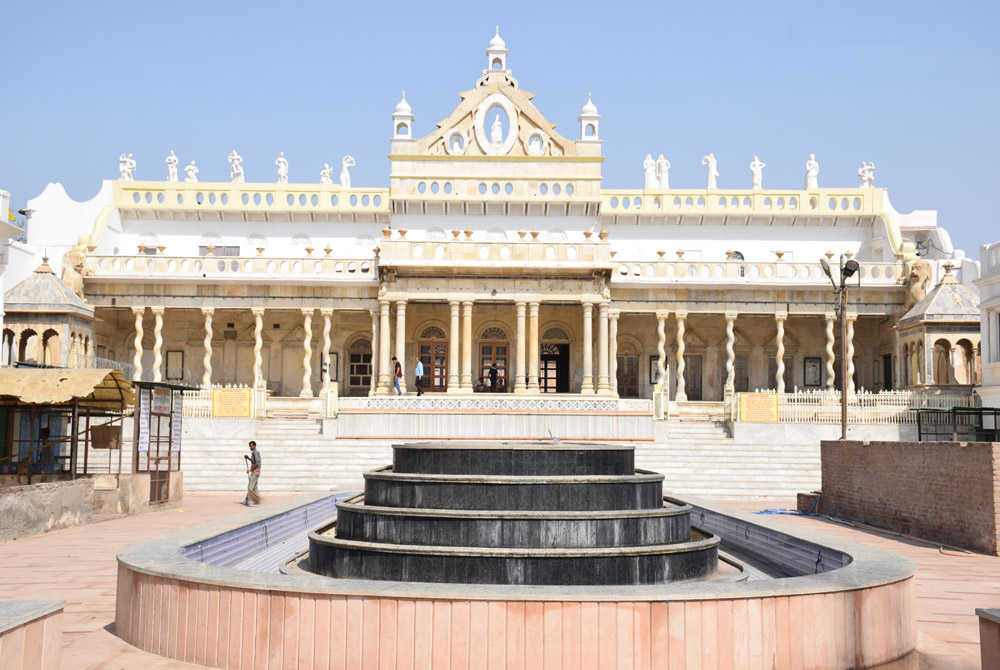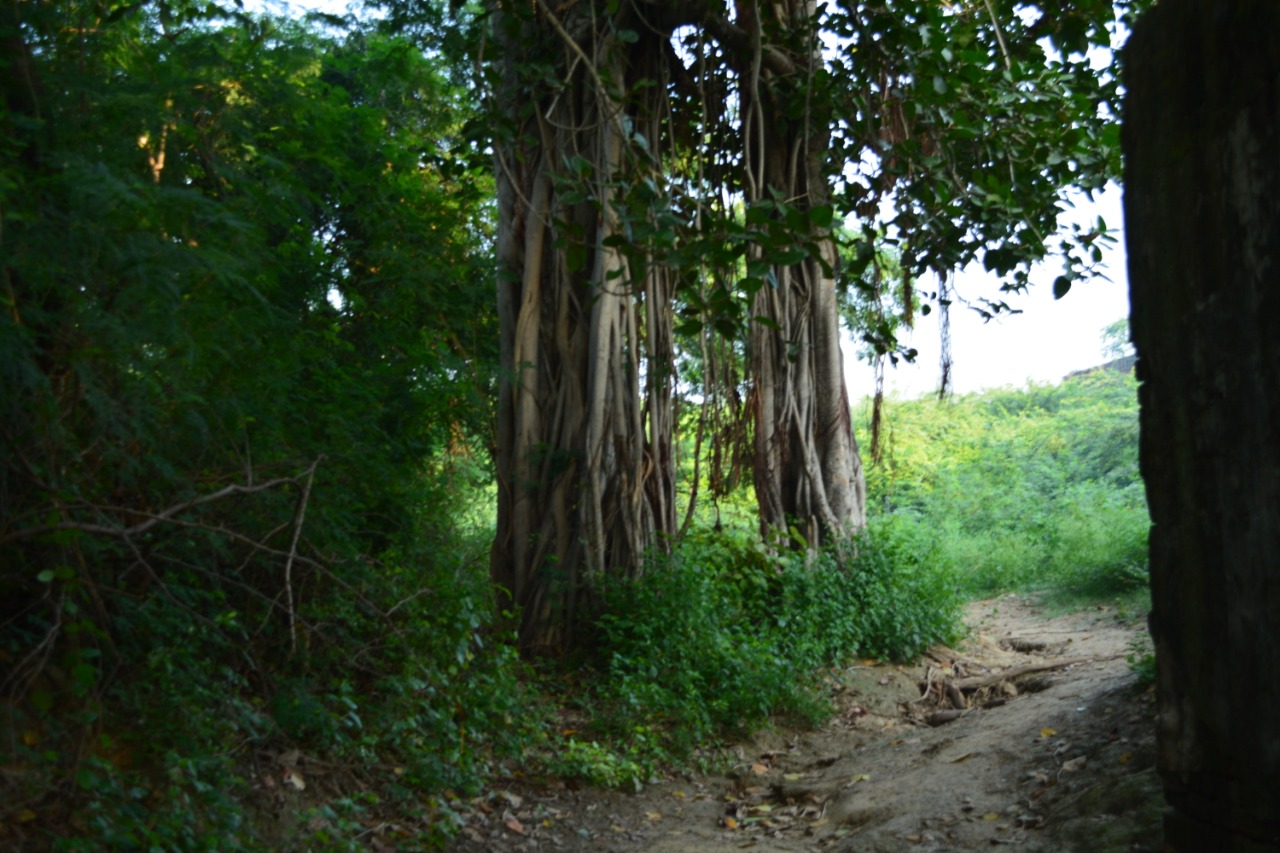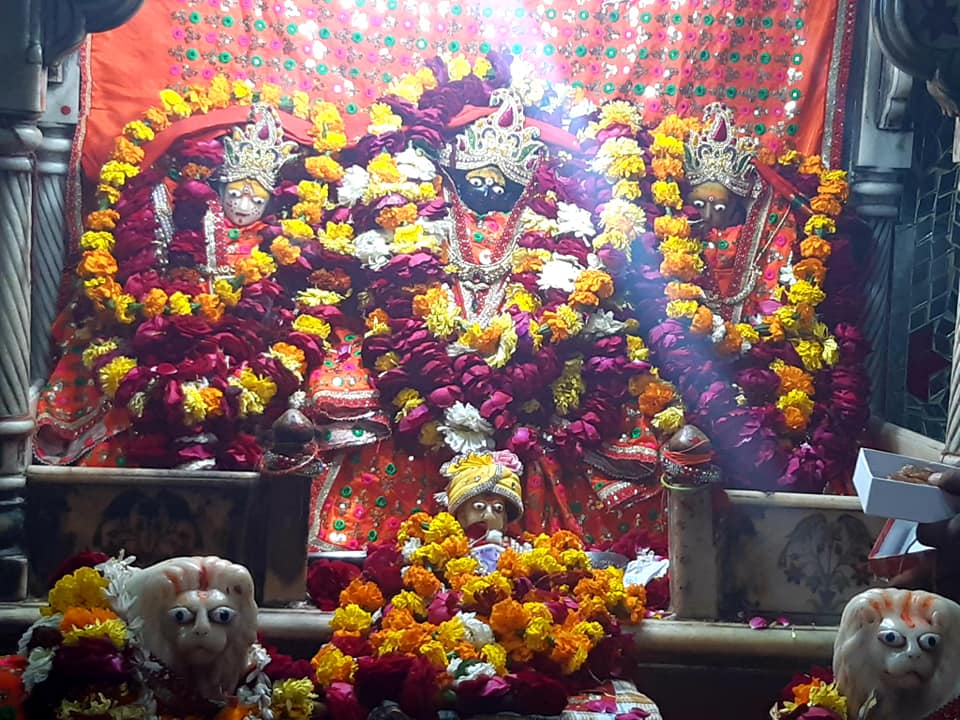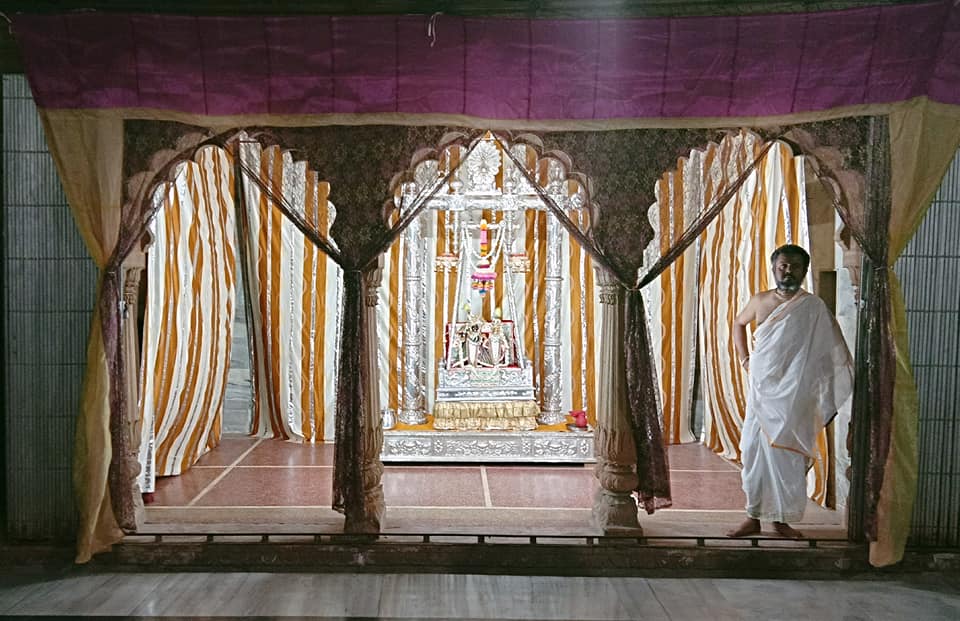Kartik Braj Darshan with Vrindavan Today (Day 18): Shahji Temple
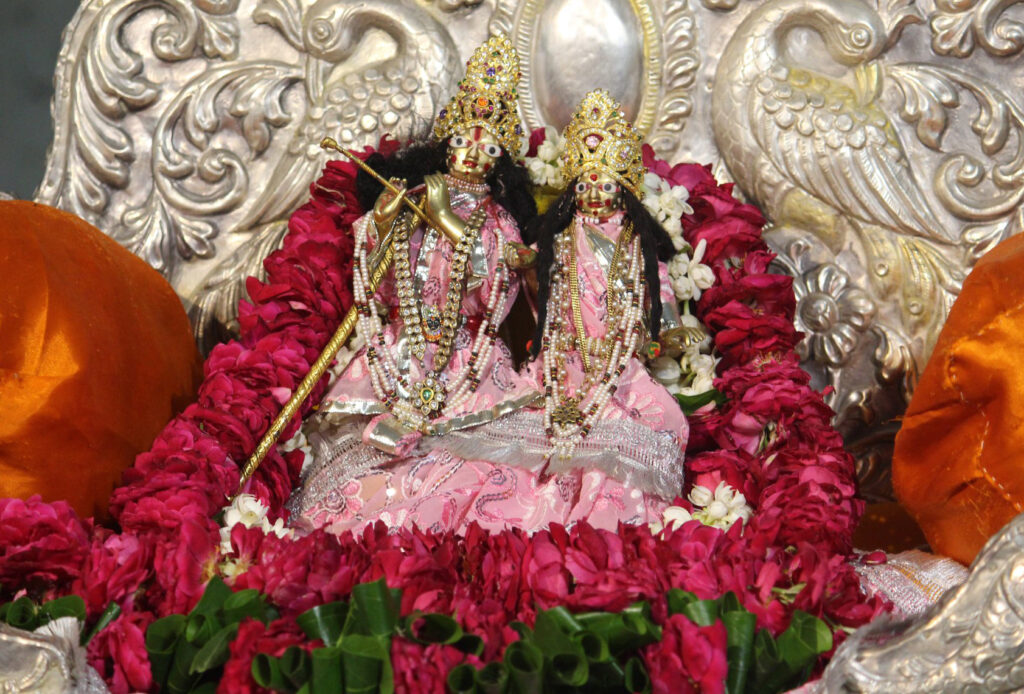
The ‘Vasanti Kamra’ of Shahji Temple opens for three days in a year – two days during the spring celebrations ‘Vasant Panchami’ and the day after; then again for one day only on Hariyali Teej, during the rainy season. The room which is a special attraction features rare and exquisite artworks, a golden throne and a dome-shaped ceiling that is dazzlingly lit by fifteen Belgain chandeliers. Under the chandeliers, there are gold plated mirrors and entrancing paintings of Krishna lila.
Vrindavan, 2021.11.01 (Vrindavan Today News): Among the historical temples of Vrindavan, Shahji Mandir stands out. This palatial temple, filled with devotional artworks, was constructed after Radha Rani appeared to Shah Kundan Lal in a dream and instructed him to build a temple near Nidhivan. Temple construction began in 1860 and took eight years to complete.
Tha Shahji temple is also known as the ‘Tera Khamba Mandir’, meaning ‘the temple with twisted pillers’. The temple features the only spiral columns among Vrindavan’s historical temples.
The Shah brothers, who founded the temple, were both poets who were dedicated to the promotion of devotional art. Besides its religious significance, the temple also holds a special place for its outstanding architecture, which is a unique blend of Mughal, Greek and Hindu styles, and is thus very different from the other temples in Vrindavan and India.
The Vasanti Room of Shahji Temple
The festival of Vasant Panchami heralds the much awaited beginning of Spring, the beginning of Holi festivities in many temples of Braj, and one of the rare occasion when devotees can have Darshan of the ‘Vasant Room’ in Shahji Temple. This room, which only opens for a few days every year, features rare and exquisite artworks, a golden throne and a dome-shaped ceiling that is dazzlingly lit by fifteen Belgain chandeliers. Under the chandeliers, there are gold plated mirrors and entrancing paintings of Krishna lila.
The room is only open for 3 days in a year-two days during the Spring celebrations ‘Vasant Panchami’ and the day after; then again for one day only on Hariyali Teej, during the Rainy Season. There is usually a big crowed in Vrindavan on Vasant Panchami, but, mercifully, the Vasant room also opens tha day after.
The Vasant room is painted yellow the colour of spring. Asked about the importance of the spring festival in the temple, Mohit Maral Goswami said that the Vasant Festival is the festival of love and harmony it fills the lives of people with spring colours.
The throne, the doors, and several mirrors some a big as ten feet high are all gold plated. Although they are more that 140 years old, they still glitter with amazing grandeur and brightness.
The unique Vasanti Kamra (spring room), has been one of the centres of attraction in Vrindavan for almost one and half centuries. Every year, thousands of devotees from far off places make the trip to Vrindavan to see this unique room.
The devotion of the Shah Brothers
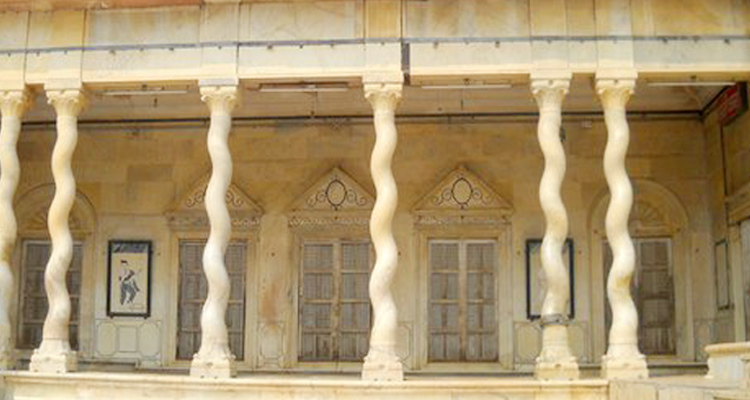
The Shah brothers, Kundal Lal Shah and Fundan Lal Shah, were the sons of a rich landlord, Shah Govind Lal. As soon as the Shah brothers got the chance, they relocated to Vrindavan, bringing their wealth and army from Lucknow. Their devotion and helpful attitude soon endeared them to the locals.
The brothers were first called to Vrindavan by their grandfather, Shah Biharilalji. Shah Biharilalji established a Deity in Vrindavan and he called the brothers to visit and bring a throne for the Deity, Who came to be know as ‘Chote Radharamanji’. When the Shah brothers returned to their family home after the trip, they longed to return to the Dham and spent their time writing poetry about Vrindavan.
Despite their intense desire to reside in Vrindavan, the brothers had to bide their time before they were able to return. Their family circumstances soon changed dramatically as their grandfather, mohter and father all passed away in little over a year, but the Shah brothers were still bound by worldly attachments as they now had the responsibility of looking after their extensive family estate in Lucknow.
They eventually moved to Vrindavan after Radha Rani Herself appeared to Kundan Lal in a dream. At the time, Kundan Lal’s Guru, Shri Radha Govind was visiting Lucknow and Goswami Galluji, who had been serving their grandfather’s Deities in Vrindavan, sent Them to Lucknow with Shri Radha Govind. Galluji sent the Deities with the instruction that the brothers should take over the worship. Then Radha Rani appeared to Shri Kundan Lal, telling him to establish a temple near Nidhivan.
After arriving in Vrindavan, Kundal Lal made a vow never to leave. His love of Vrindavan was so intense he did not want to pollute the holy land, so he arranged for his bodily waste to be sent outside of Braj in clay pots.
Both the brothers were constantly engaged in bhajan from the early hours of the morning singing devotional verse; arranging dances and Rasa Lila, serving their Deities and writing poetry in several Indian languages, mostly under the pen names Lalit Kishori and Lalit Madhuri.
Fundan Lal in Court
Once, Fundan Lal was called to Mathura on charges of giving shelter to the rebel Hirasingha. Explaining his reasons for giving shelter to the rebel group, Fundan Lal explained that he had threatened to oust them with his army but promised to give them shelter if they quickely left Braj and did not harm any person or property here.
Fundan Lal continued, “Sir! You can hang me if you want. But, before hanging, the criminal is asked what he wants. I tell you what I want. I want that you hang me in Vrindavan and let there be kirtan at the time of hanging. If you hang me like this, I shall regard hanging not as a punishment but as a reward.”
The magistrate was impressed by the fearlessness of his devotion and ordered his release.
The auspicious last journey through Braj Raj
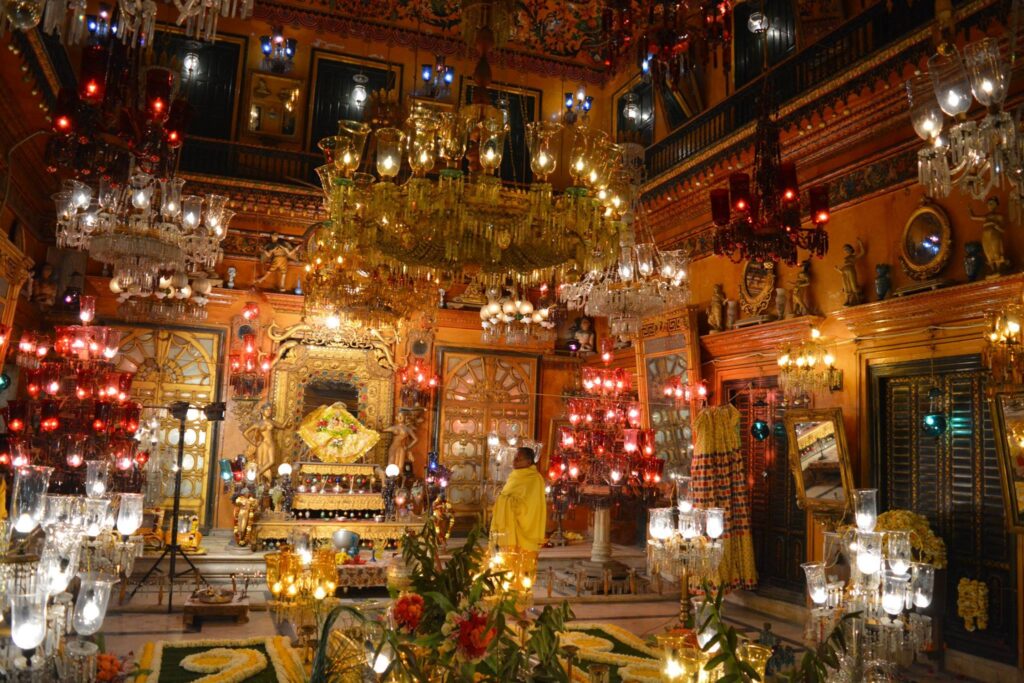
At the end of his life, the elder of the two brothers, Shah Kundan Lal, made preparations to leave his body in the most devotional environment. He had a platform built and lay there for two days, listening to kirtan.
He gave instructions that, when he left his body, the body should not be carried on anyone’s shoulders but should be dragged through the Braj dust. A path of ‘Braj Raj’ was laid out from the Shahji temple to the yamuna for his final journey through the holy dust of Shri Vrindavan.
The legacy of the Shah Brothers
The magestic Shahji temple is the legacy of the Shah brothers, who left an opulent life for the opportunity to live in Vrindavan and serve ‘Chote Radharaman Ji.’ The spectacular decorations and architecture of the temple pays tribute to their absorption in bhakti and devotional art.


